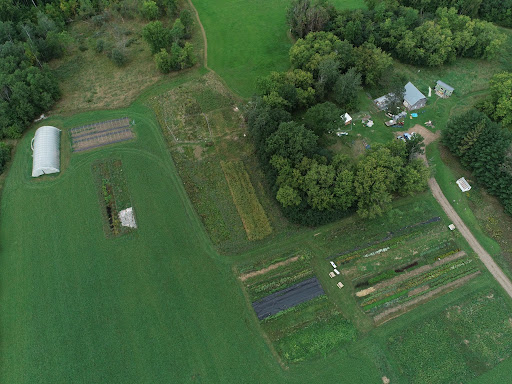
Last month, Farmers for Monarchs detailed how the monarch migration is an awe-inspiring feat of nature – its complexity demonstrates how vulnerable but yet resilient this amazing insect is. The multi-generational migration cycle relies on a chain of well-timed events, the success of which dramatically decreases when just one link in the chain is disrupted. It makes it all the more important to recognize that the fall migration period is upon us, meaning now is a good time to examine where migration is actively occurring, and what farmers and landowners can do to improve the floral resources needed to sustain this amazing phenomenon.
Site Assessment
Fall is an ideal time for landowners to look for areas that might be good monarch and pollinator habitats. It is critical to not only identify and preserve pollinator foraging sites but also nesting sites. If you know where pollinators are living and foraging, you can take steps to avoid disturbing them. Monarchs migrate but other pollinators and insects use nectar resources in the fall. Then, throughout the winter, they will use woody material for nesting. If you see blooming plants let them die back naturally. Just as upland birds, deer and other wildlife use woody areas and grasslands over the winter, so do pollinators and other insects. Clearing all the leaves and dead/dying plant materials off your land may come at a cost to local pollinators because it removes nesting or overwintering habitat. The Natural Resources Conservation Service Center outlines the type of nesting sites commonly utilized by bees.
- Wood-nesting bees are solitary, often making individual nests in standing dead trees in tunnels made by other insects and wildlife
- Ground-nesting bees include species that construct nest galleries under the ground.
- Cavity-nesting social species—like bumblebees—make use of small spaces, such as abandoned rodent burrows, wherever they can find them.
The Service also provides a comprehensive resource conservation plan for monarchs called Working Lands for Monarch Butterflies. It details numerous conservation practices for farmers, ranchers, and other producers that can be considered when assessing the best uses for land on the farm.
If you need help in identifying habitat, contact Farmers for Monarchs at (833) MILKWEE or contact your local Extension office.

The Super Generation
The migratory generation of monarchs that departs for their overwintering grounds each fall is different from the previous generations. As the U.S. Fish and Wildlife Service details, previous generations complete their life cycle in four weeks. The first few generations are responsible for the northward migration, then summer breeding generations ultimately produce a fourth or fifth generation that completes the entire migration to the overwintering grounds.
Migratory monarchs out-live their parents and grandparents – surviving up to nine months as they migrate, overwinter, and begin the return journey north. As noted last month, they rely on late season wildflower nectar to fuel their flight. The overwintering monarchs of the super generation require “Goldilocks” type conditions – not too hot, not too cold – to survive the winter without freezing and without using too much of their energy reserves.

Community Scientists
While the migratory generation makes its fall migration to overwintering grounds, community scientists play a critical role in providing data on monarch migration and population numbers. As stewards of the land, farmers, landowners, and other producers have a unique opportunity to support this effort by recording monarch sightings. Fortunately, there are several tools and resources available to make providing and collecting this data as easy as possible. Farmers for Monarchs has previously highlighted the HabiTally app, hosted by Iowa State University , which enables anyone to enter data about monarch habitat conservation efforts and sightings on their farms, yards, or other locations.
For those who want to take a more active role in tracking monarch migration, an organization called Monarch Watch leads a large-scale tagging program that helps answer questions about monarch migration. According to its website, Monarch Watch distributes more than a quarter of a million tags to thousands of volunteers across North America who tag monarchs as they move through their area. Watch the video below to learn more about the tagging program.
Take a look at the Community Science Program list created by the Monarch Joint Venture and see what program could work for you!
The amazing migratory cycle of monarchs is a feat of nature worth protecting, and we must all do our part. Stewardship of biodiversity within our farmland is an important component. Whether that is tagging butterflies with kids or grandkids, sharing fall butterfly roost sightings, or simply being mindful of pollinator habitat and shelter on your land, we can all take steps to ensure this magical migration continues for future generations.
